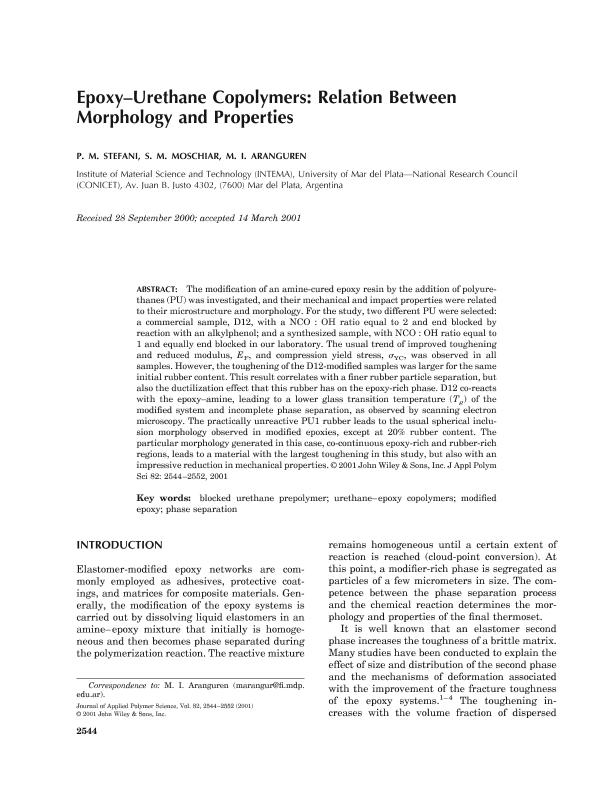Artículo
Epoxy-urethane copolymers: Relation between morphology and properties
Fecha de publicación:
20/09/2001
Editorial:
Wiley
Revista:
Journal of Applied Polymer Science
ISSN:
0021-8995
Idioma:
Inglés
Tipo de recurso:
Artículo publicado
Clasificación temática:
Resumen
The modification of an amine-cured epoxy resin by the addition of polyurethanes (PU) was investigated, and their mechanical and impact properties were related to their microstructure and morphology. For the study, two different PU were selected: a commercial sample, D12, with a NCO : OH ratio equal to 2 and end blocked by reaction with an alkylphenol; and a synthesized sample, with NCO : OH ratio equal to 1 and equally end blocked in our laboratory. The usual trend of improved toughening and reduced modulus, EF, and compression yield stress, σYC, was observed in all samples. However, the toughening of the D12-modified samples was larger for the same initial rubber content. This result correlates with a finer rubber particle separation, but also the ductilization effect that this rubber has on the epoxy-rich phase. D12 co-reacts with the epoxy-amine, leading to a lower glass transition temperature (Tg) of the modified system and incomplete phase separation, as observed by scanning electron microscopy. The practically unreactive PU1 rubber leads to the usual spherical inclusion morphology observed in modified epoxies, except at 20% rubber content. The particular morphology generated in this case, co-continuous epoxy-rich and rubber-rich regions, leads to a material with the largest toughening in this study, but also with an impressive reduction in mechanical properties.
Archivos asociados
Licencia
Identificadores
Colecciones
Articulos(INTEMA)
Articulos de INST.DE INV.EN CIENCIA Y TECNOL.MATERIALES (I)
Articulos de INST.DE INV.EN CIENCIA Y TECNOL.MATERIALES (I)
Citación
Stefani, Pablo Marcelo; Moschiar, Stella Maris; Aranguren, Mirta Ines; Epoxy-urethane copolymers: Relation between morphology and properties; Wiley; Journal of Applied Polymer Science; 82; 10; 20-9-2001; 2544-2552
Compartir
Altmétricas




